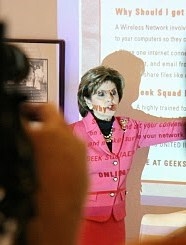Media Training: How to Control Your Message
What sets the professional apart from the amateur can be summarized in one word: training. While it is not brain surgery, complex operations are indeed involved, thus training is another piece of the overall communications strategy which must be in place.
Whoever is to be the face and voice of the organization must know how to effectively communicate, especially orally and visually. And as shallow as it may sound, how you look is extremely important to how your message is received by your target audiences. Not just the clothes you wear, but your facial expressions and body language all communicate something about you and your organization.
Speaking calmly, clearly and effectively in all situations is a valuable skill which can be learned with targeted and hands-on training, including practice interviews on camera. Developing quotable quotes is another part of media training which can lead to you and your organization being the “go to” source for reporters.
Over a period of more than 10 years, I have trained 2,000 plus participants in effective communications. Participants included leaders in NGOs, nonprofits, governments, faith-based organizations and the media, in more than a dozen African countries as well as in Washington, DC.
In addition, I am a former adjunct professor of journalism at Howard University and Trinity University, so I understand the importance of training and education principles.
As a trained professional with a Master’s Degree in Journalism, I have more than 10 years of experience designing, implementing, leading and advising senior leaders in governments and nonprofit organizations about effective communications strategies that help deliver results in international development. To learn more about my experience including online products, outreach, media relations, stakeholder engagement, crisis communications, and media training, read my bio, check out my portfolio or contact me today.
To greater success,
Nolu

